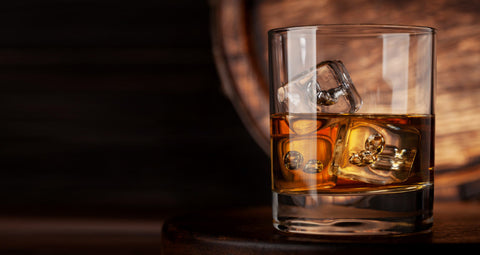Secret Stills and Hidden Compartments: Rare Facts About Whiskey Production During Prohibition in the US
Whisky is among the most popular alcoholic beverages worldwide, enjoyed by individuals of different socioeconomic backgrounds and cultural origins. But where did this luxurious beverage come from? Whiskey has a rich and interesting history that dates back to the Medieval Ages in Ireland and Scotland, where it was first produced.
Whiskey has been an integral part of the social and cultural fabric of many countries, from its early days as a medicinal tonic to its present day status as a symbol of celebration and good cheer. Let's go back in time to learn how this cherished ethereal being came to be.
- Whiskey was first distilled in the early Middle Ages, when monks in Ireland and Scotland perfected the method.
- Whiskey is derived from the Gaelic for "water of life," uisce beatha.
- In 1494, a Friar named John Cor received permission from King James IV of Scotland to distill "aqua vitae," also known as whiskey.
- Moonshine refers to whiskey distilled in clandestine stills in Scotland and Ireland in the 18th century.
- In 1608, the Bushmills distillery in Northern Ireland received the license that made it the first legal distillery in the world.
- The Continental Army actually utilized whiskey as currency during the American Revolutionary War.
- Whiskey that is at least 51% corn and matured in fresh, charred oak barrels is called "bourbon," a name that was coined in the state of Kentucky in the 18th century.
- Irish whiskey outsold both Scotch and American bourbon in global sales during the 19th century.
- During the United States' Prohibition period (1920-1933), bootleggers produced and sold their own illicit whiskey.
Whiskey is now made in a wide variety of countries, from Japan and Canada to India and India, and is appreciated by people of all different backgrounds and cultures.

Whiskey manufacturing and consumption in the United States moved underground during Prohibition, with bootleggers distilling illegal alcohol. Some little-known details about whiskey distilling during the period are as follows:
- During the Prohibition era, illicit distilleries typically operated out of basements, attics, and even caves in order to avoid detection.
- The so-called "moonshiners" utilized corn, sugar, and even potatoes in their whiskey recipes.
- Homemade stills were commonly utilized by moonshiners, despite the fact that they posed a significant risk of explosion.
- Moonshiners would distill tiny quantities of whiskey and smuggle it across state lines using secret compartments or by passing it off as something else.
- Several of the moonshiners developed expertise in making premium whiskey utilizing methods employed by modern craft distillers.
- During Prohibition, many bootleggers had ties to organized criminal figures like Al Capone.
- Whiskey was in high demand during Prohibition, and many individuals were willing to pay inflated rates for it despite the risks.
- Jack Daniel's and Jim Beam, two of the most well-known whiskey labels today, both had their origins in the illicit distilling and distribution of whiskey during the Prohibition era.
- Several former moonshiners and bootleggers went straight after the repeal of Prohibition, establishing their own legitimate distilleries.
- Even though bootlegging and moonshining are now illegal, they are remembered as an interesting chapter in American history.
The production and selling of whiskey in the United States went underground and became linked to organized crime during the era of Prohibition. But, this era is also notable for producing some of the world's most recognizable whiskey labels and fascinating anecdotes about the inventiveness and resourcefulness of the whiskey's early adopters.
Craft distilleries have sprung up all over the United States since the repeal of Prohibition and are continuing the tradition of making premium whiskey using time-tested methods passed down through the generations.